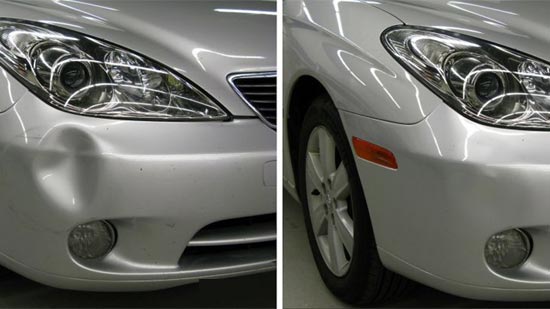Owning a car is no longer a luxury. It is a necessity. The kind of service a car will give you depends on how well you care for it. But taking care of a car, especially a new one, can be an expensive and time-consuming undertaking.
The importance of car care runs the gamut from the aesthetic appearance to the performance and safety. A well cared for automobile is safe to drive, is in perfect condition and runs properly for as long as possible. A new car that is not well taken care of can cause a range of consequences ranging from excess expenditure to accidents.
You can learn how to take care of a new car to avoid the aforementioned consequences. All you need is the right information. The good news is that the information is right here. These few simple tasks are time proven and will make your new car last longer.
Tip 1: Ensure Your Car Is Insured
The moment you pay for a new car, you must think about insuring it. At the very least, it should have liability insurance. Should you crash into another car or any other object including pedestrians, any repairs or bills will be paid for by the insurer.
Ensure you keep a copy of the current insurance document in a safe place in the car. This way, you will not accidentally toss it out when you vacuum, clean or de-clutter your car. If you accidentally crash into an expensive car an adequate coverage can save you thousands of dollars in major or minor auto body damage repairs.
Tip 2: Conduct Regular Checkups
Motorists have the tendency to do weird things while waiting for their tank to fill. Do not follow after their example if you want your new car to serve you well. Instead, seize the opportunity to conduct these three important checkups.
- Check Your Tire Pressure: Do you know that maintaining the right tire pressure can save your life and even your pocket? Over-inflated or under-inflated tires do not handle or stop as well as tires with proper pressure. Furthermore, tires with the right pressure are more durable and improve fuel efficiency.
- Clean the Windshield: A car with dirty windshield is never attractive. Besides, a bug-splattered and dirty windshield can block your vision while driving. This can pose a safety hazard. Make it a regular habit to clean the windshield. You can do it when you get to a gas station.
Use the spongy part of the squeegee belonging to the gas station and soak the entire windshield with the cleaning liquid. Tightly pull the squeegee from the center of the windshield to either side. Finish off any remnant streaks by pulling the squeegee downwards from the top.
Cleaning the windshield is important every time you travel long distances. Your windshield will likely be littered with dead insects. It gets worse if you try to clean the insect carcasses with your car’s wipers and cleaning fluid. You can use the squeegee to clean your dirty headlights too.
- Asses The Oil Level And Top Up If Necessary: The performance of your new car is dependent on the oil level. The function of the oil is to lubricate all the moving parts of the automobile’s engine. Insufficient motor oil means engine parts will grind against each other. In the process, they wear and tear leading to poor performance and early damage.
Motor oil also does the important function of transferring heat away from the combustion cycle. It also traps and blocks all the dangerous byproducts of combustion and sends them to the filter. Inadequate engine oil means all these functions are lost. Your engine will be at risk of going berserk.
To ensure your new automobile always has enough motor oil, carry out regular oil checkups. It is very easy to check the oil level. You need to have a clean paper towel, a light source and a couple of minutes. Keep in mind that you have to check oil only after you have turn off the engine for at least 5 minutes. This allows the oil to drain back into its pan.
Here is how to check the oil level:
Step 1: Locate the Dipstick
Make sure the car is on a level ground before you begin. This will allow you to take an accurate reading. You can then locate the dipstick of the engine. The dipstick is either labeled with an image of oil can or just the word ‘OIL’.
Step 2: Pull the Dipstick Out and Wipe
Once you find the dipstick, pull it all the way out. Wipe it clean with a dry cloth, your paper towel or the one you obtain from the gas station.
Step 3: Push Back the Dipstick and Take the Reading
Push the now dry dipstick all the way inside. Pull the stick out once more and take the new reading. Make sure you do not turn the dipstick upside down as you pull it out. This prevents the oil from running upwards to interfere with the accuracy of your reading.
Dipsticks have two guide marks on their lower aspects. Read the oil level by checking where the wet part ends and dry part starts. Oil level between the two marks is adequate. A level below the lower mark is a sign of inadequacy. You need to add motor oil. Remember to add only one quart of oil at a time.
Tip 3: Comply With the Maintenance Schedule of Your New Car
All cars come with manual or instruction on how to take care of them. Most of the tasks in the maintenance schedule require to be performed only less frequently. However, they are very important in the longevity and performance of a car.
The tasks generally include tire rotations oil changes, transmission fluid replacements and the kind. Dealers and mechanics may tell you to bring your new car for such maintenance tasks every 3,000 miles. Do not believe them. Modern cars are designed to go for up to 5,000 miles before requiring such tasks. Follow what the owner’s manual recommends. This will save you a lot of money.
As general recommendations, you can:
- Change the motor oil every 5,000 miles
- Rotate tires every 5,000 to 10,000 miles depending on the quality of your tires
- Change the oil filter every 12,000 miles
Tip 4: Always Keep Your Car Clean
The only way to keep your car clean at all times is to wash it regularly. As you drive, your car will get beatings from salt, sunrays, acid rain, grease and grime, dead bugs, tree sap, smog and the acidic compound found in bird poop. These things will eat up the pain and then the metal underneath. In no time, your new car will look 10 years old.
If you fail to wash the stains away, your car will corrode the body of your car leading to a potential for poor re-sell value. But how often do you need to clean your new vehicle? There no single recommended interval because many factors play a role. You may need to clean it more frequently if you live in a highly polluted environment.
As is the tendency of some car owners, please do not turn your automobile into a garbage can. Have somewhere you can drop any trashes in the car. Also, form a habit of cleaning the interior of the car as often as possible.
Keeping the interior of your car clean and well organized will not only make it look great but also reduce your stress and make your driving experience more gratifying. The interior will smell fresh and nice giving you the confidence to invite friends in.
Final Thoughts
Your car is the next basic need after food, shelter, clothing, and education. It is becoming increasingly hard to survive without a car. If you have decided to buy a new car, then you must be ready to care for it since it is a major investment. Now that you have learned how to take care of a new car, you can be confident your car will last longer and serve you optimally. You can share more insights that the article left out. Also, feel free to share the word if you find the article helpful.





